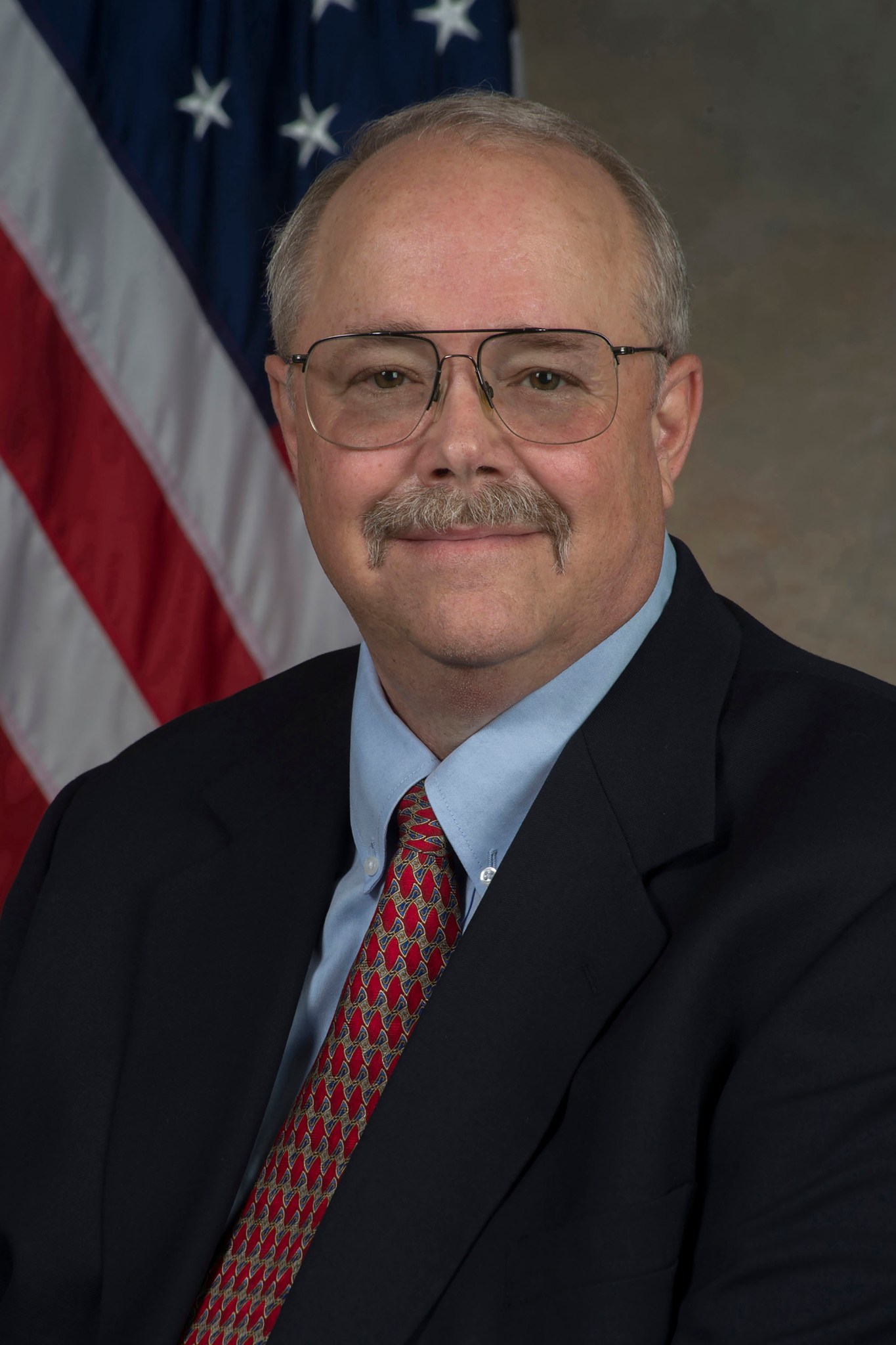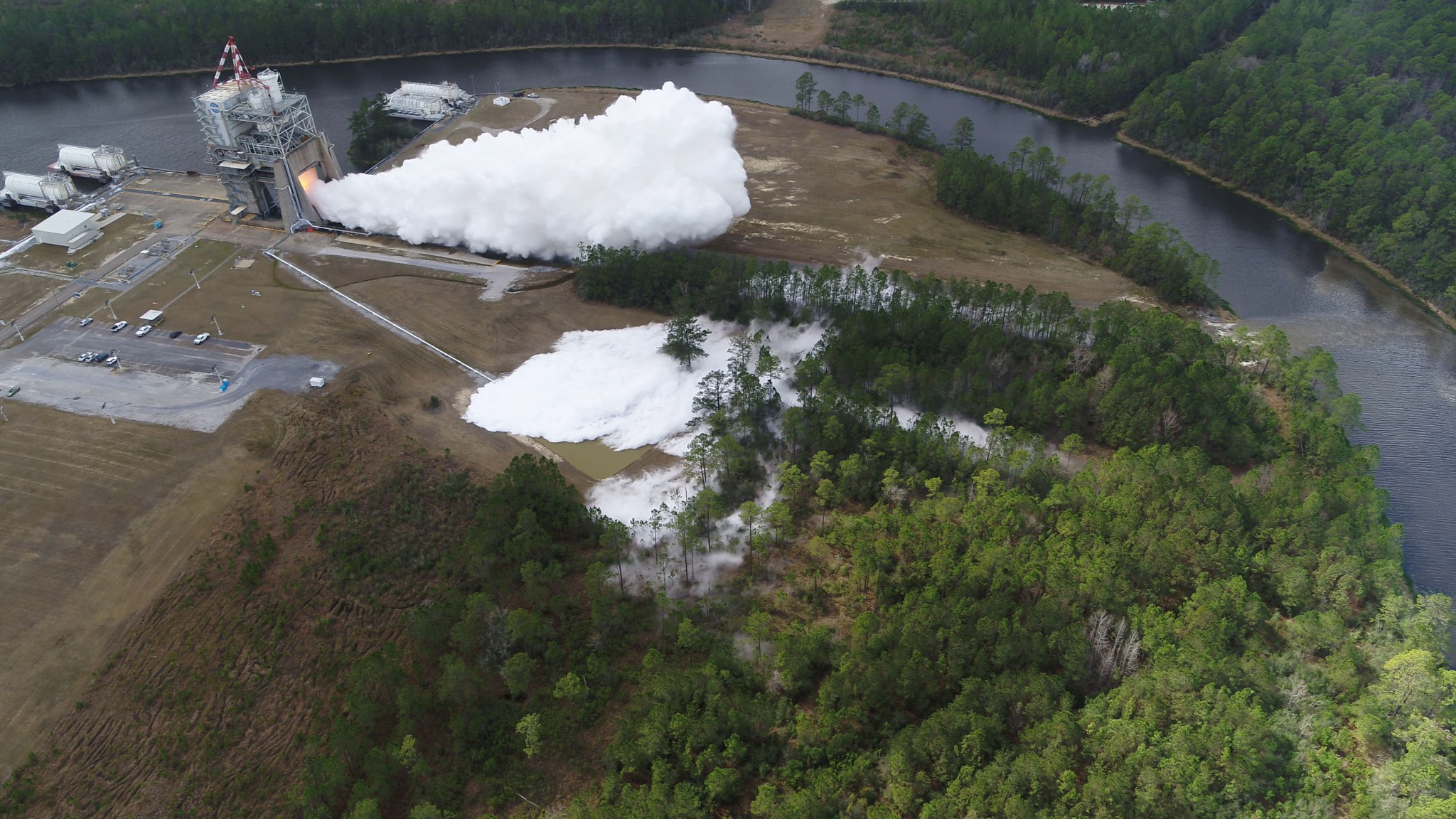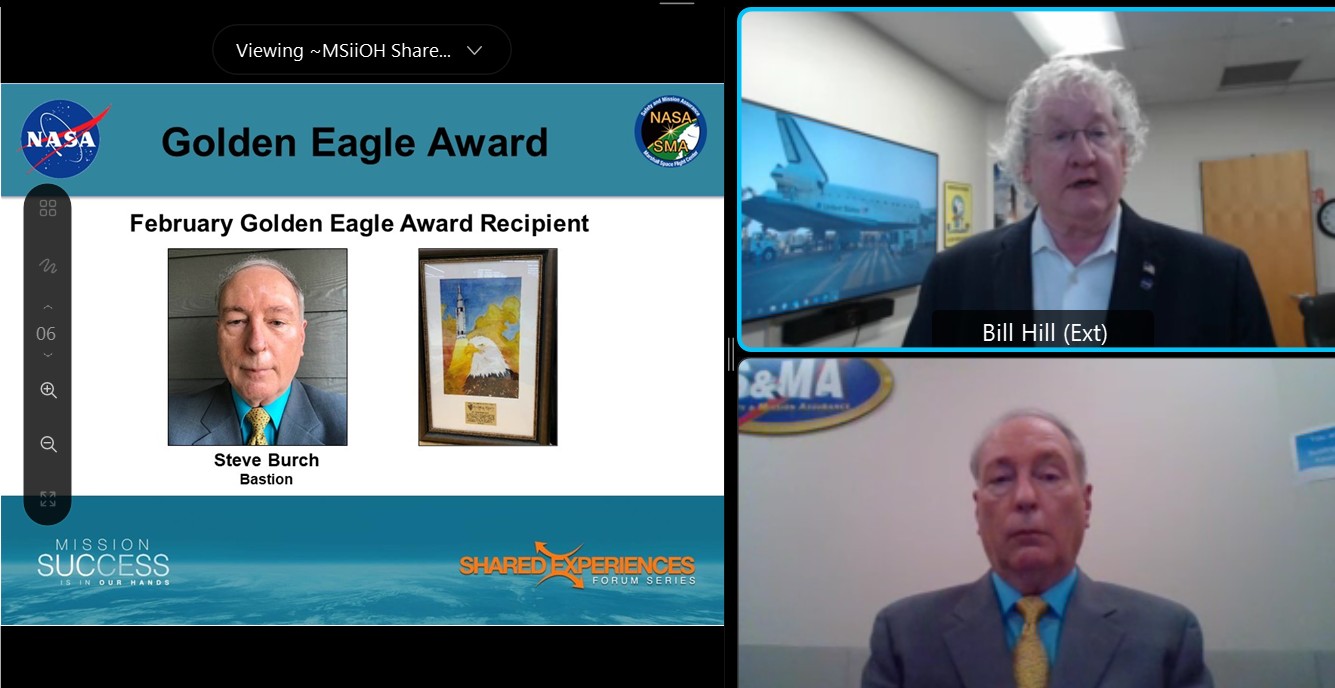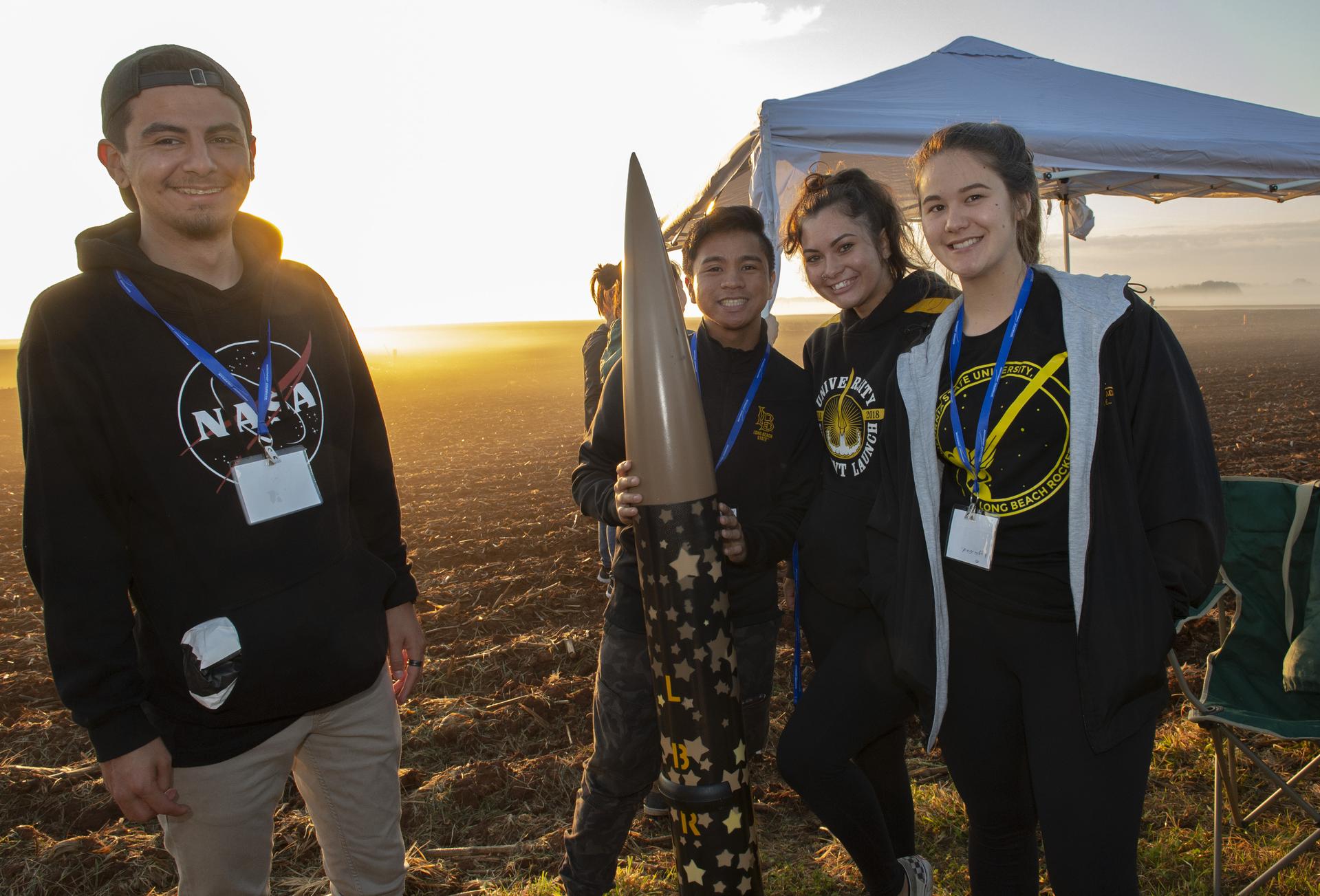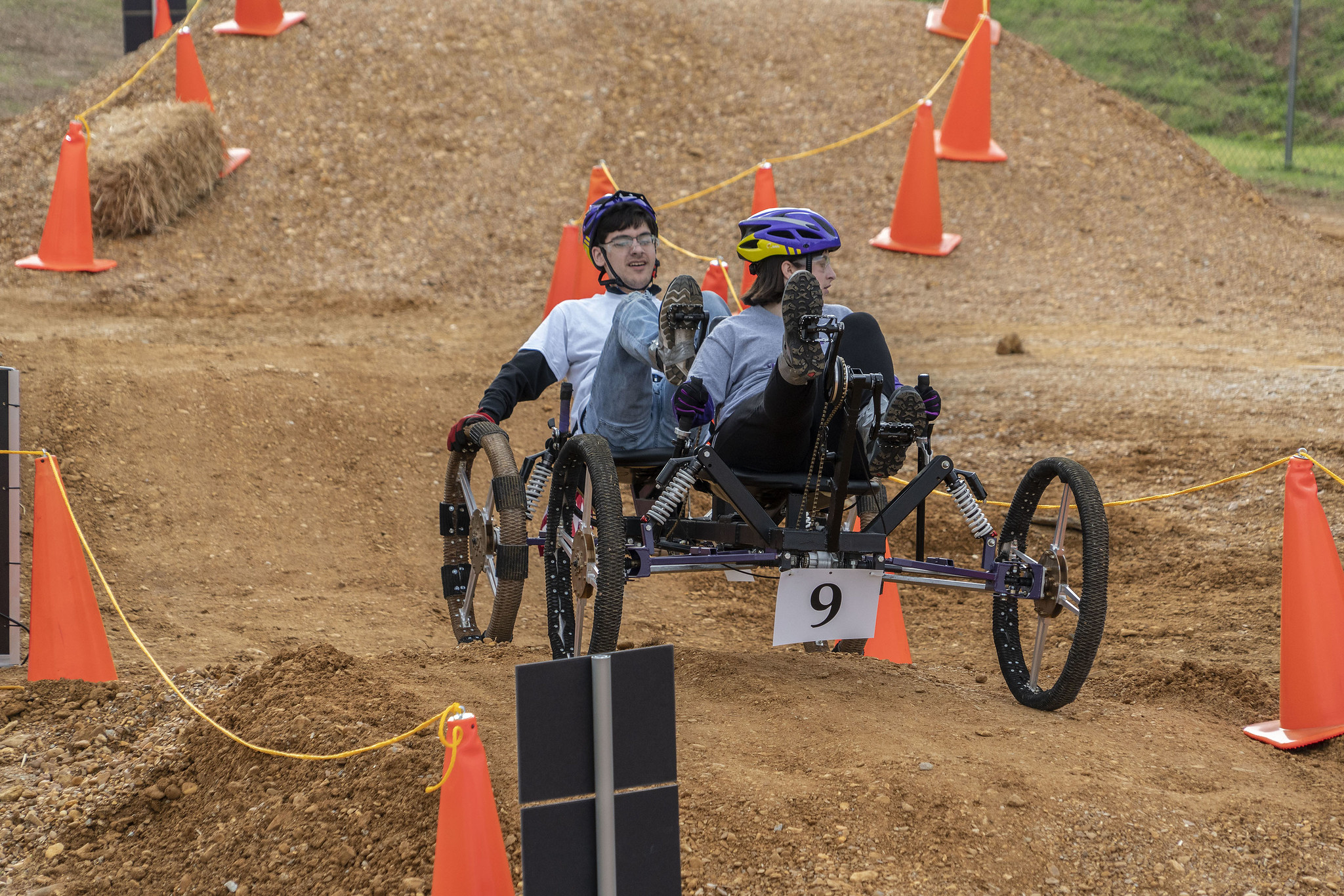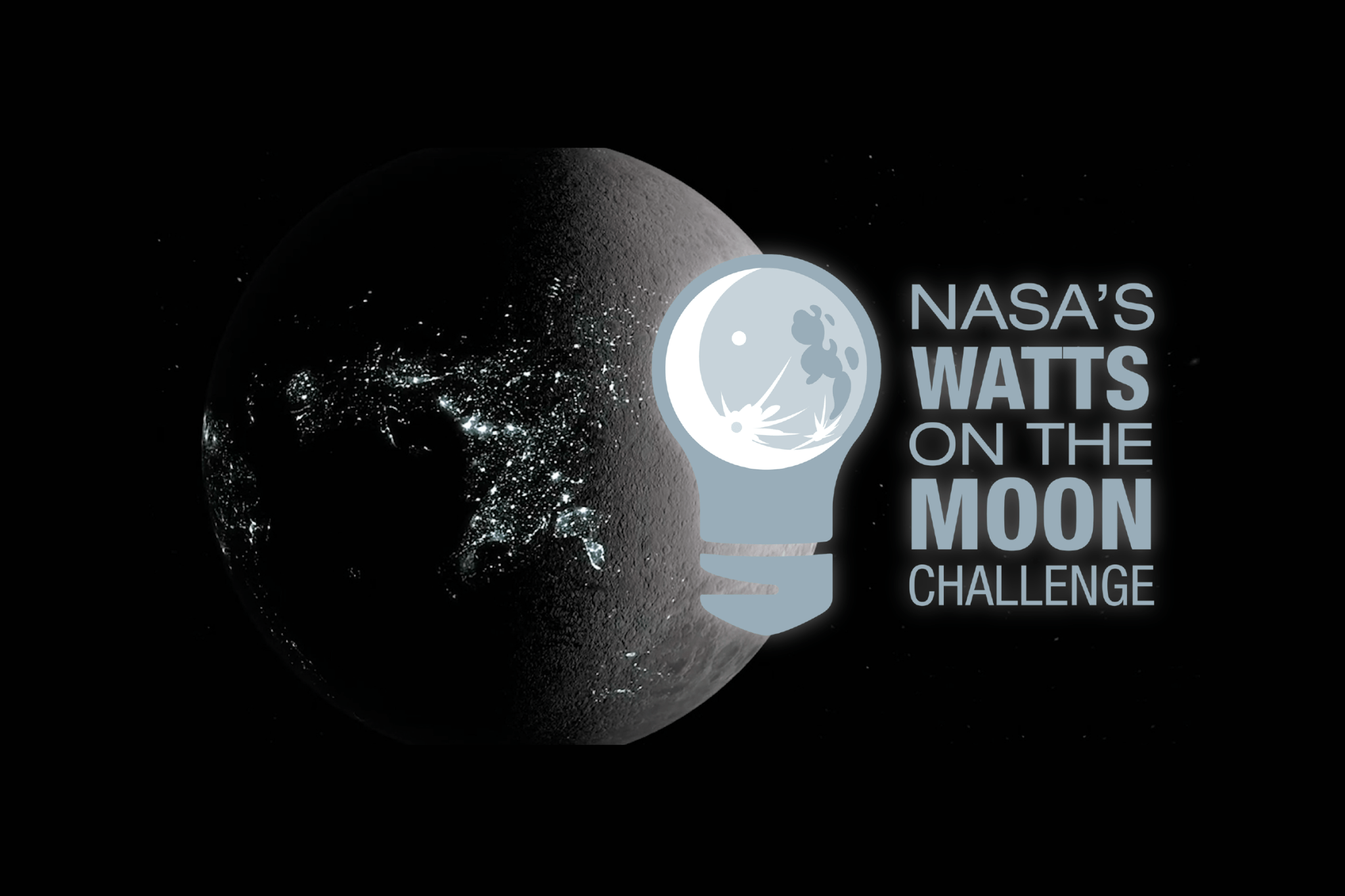Rick Burt Named Special Assistant to Marshall Director
Rick Burt has been reassigned to the position of special assistant to the director of NASA’s Marshall Space Flight Center.
Burt will oversee Marshall’s Future of Work implementation, guiding the evolution of workforce operations to balance on-site work, telework, and hybrid operations. He will help determine the best methods to accomplish the mission and provide continued flexibility in where and when work is performed. Burt will steer the center’s practices, guidance, technology, and infrastructure changes, as well as cultural norms as team members transition to increased on-site work, focusing on equity and inclusive access, training, and team building regardless of work location. He will also incorporate new ways of doing business, including recruitment and retention of the workforce to enable the execution of critical missions.
Burt will also continue to lead Marshall’s Valued Voices initiative and assist Director Jody Singer in the selection of a new deputy director to ensure a smooth and timely transition.
Throughout his 32-year NASA career, Burt has worked in multiple technical management and leadership positions. He has made significant contributions to NASA’s space flight programs, including the Space Shuttle Program, Constellation Program, and Space Launch System (SLS) Program. Since his appointment to the Senior Executive Service in 2006, he has worked in several executive leadership roles, including manager of the Ares I First Stage, director of the Test Laboratory, and SLS chief safety officer.
Prior to becoming deputy director, Burt was director of the Safety and Mission Assurance Directorate since 2016. Before his NASA career, he worked for the Tennessee Valley Authority for 12 years in numerous leadership positions in its nuclear power program. In total, Burt has 44 years of continuous federal service.
John Honeycutt Applies Leadership, Vision to Build SLS Moon Rocket
By Gina Hannah
Large endeavors are not accomplished alone. John Honeycutt, program manager of NASA’s Space Launch System (SLS) rocket at Marshall Space Flight Center, often compares building his own house to leading his team that has built the world’s most powerful rocket, which will return astronauts to the Moon on the Artemis missions.
“To build a good house and a Moon rocket, you must first build good relationships,” Honeycutt said. “When I built my house, I did a lot of the work myself, but I subcontracted a lot of it out, too. For the contractors that worked on my house, it helped to have a strong relationship with them.”

He used this same principle to build the team that has taken the SLS rocket from design to production, and now to the upcoming launch of the first Artemis mission. Over the years, the SLS team has involved 1,100 suppliers in 48 states, including Alabama where Honeycutt grew up. His father was a mechanical engineer who was a metals expert for the Army and Marshall.
Honeycutt followed in his father’s footsteps, earning a degree in mechanical engineering from the University of Alabama in Huntsville. Through much of his college life, he worked various jobs, including managing a small grocery store, fixing cars, managing a gas station, and working in a mom and pop hardware store in nearby Madison. That mix of jobs along with his education gave him two important skills that he still uses to manage one of NASA’s most important programs: mechanical engineering know-how and people skills from working with the public.
At his first job with Rockwell International, Honeycutt worked on environmental and structural testing as part of developing the International Space Station, as well as the main propulsion system, external tank, and launch support for the Space Shuttle Program.
“The job gave me a broad base of experience and taught me the importance and the rigor required to design and test hardware for human spaceflight,” he said. “It instilled in me the attention to detail required to design large, complicated systems that must operate to keep crews safe and make bold space missions successful.”
Honeycutt brought this philosophy with him when he joined NASA nine years later. He was manager for the space shuttle’s external tank, and he worked in many SLS positions before being named SLS program manager in October 2015. He described the rocket’s early days of development as challenging, not just in designing and building the hardware, but also building the systems, facilities, and talent to evolve the program from a focus on design and development to a production and operations environment.
“The Space Launch System was the first big rocket to undergo the design and review process since the shuttle days,” Honeycutt said. “You had new faces and new players, probably more so than experienced people. Even though we had some proven hardware from the shuttle, that hardware presented some unique challenges because now it had work on a different rocket for a totally different types of missions beyond low-Earth orbit. It wasn’t just a plug-and-play.”
It is not just building the parts of the rocket that is challenging. The SLS team collaborates with the Orion Program and Exploration Ground Systems Program to get the rocket ready to launch, an endeavor that involves stacking the boosters and core stage on the mobile launcher, connecting the upper stage with Orion, and ensuring all systems are “go for launch.” Like the often-invisible work required to make a house a livable home, the systems must all work together.
“There’s a huge integration piece to make the Artemis missions successful that involves not only hardware and software, but also, perhaps most importantly, people and processes. As the program has evolved, we’ve built a strong leadership team,” Honeycutt said. “We’ve got everybody pushing in the same direction toward launch of the first Artemis mission to the Moon, which is what we want. You don’t get there without building strong relationships from the very beginning. The payoff is seeing that rocket soar off the pad and launch a new era of deep space exploration.”
Hannah, an LSINC employee, supports SLS Strategic Communications.
NASA Powers Up RS-25 Engine Testing for Deep Space Launches
NASA powered up its third RS-25 engine hot fire test of the new year Feb. 24 on the Fred Haise Test Stand at Stennis Space Center. Operators fired the engine past recent testing at the 111% power level up to 113% for a period of time.
NASA is testing RS-25 engines to help power the agency’s Space Launch System (SLS) rocket on future deep space missions. Initial SLS missions will send the agency’s Orion spacecraft to the Moon as part of NASA’s Artemis program. Work is underway inside the Vehicle Assembly Building at NASA’s Kennedy Space Center to prepare the first SLS for the upcoming launch of the uncrewed Artemis I mission, which will pave the way for future flights with astronauts to explore the lunar surface and prepare for missions to Mars. Artemis missions will land the first woman and first person of color on the lunar surface.
SLS will be the world’s most powerful rocket and the only one capable of sending Orion, astronauts, and supplies to the Moon in a single mission. Four RS-25 engines, firing simultaneously, will generate a combined 2 million pounds of thrust to help power SLS’s ascent. The RS-25 engines for the first four SLS flights are upgraded space shuttle main engines and have completed certification testing. RS-25 engines for subsequent missions will fire at 111% of their original power level to help launch SLS. Testing at 113% power level at Stennis demonstrates a margin of safety for operating the engine at the higher thrust.
Each engine test in the current series at Stennis provides valuable operational data to NASA’s lead contractor, Aerojet Rocketdyne, on new components manufactured with state-of-the-art fabrication techniques as the company begins production on new RS-25 engines. The testing is part of NASA and Aerojet Rocketdyne’s effort to use advanced manufacturing methods, significantly reducing the cost and time needed to build new engines. For NASA’s Feb. 24 test, engineers fired the RS-25 developmental engine for a full duration of about 8 1/2 minutes (500 seconds), the same amount of time the engines must operate to help send SLS to space. SLS, Orion, commercial human landing systems, and Gateway outpost in orbit around the Moon are NASA’s backbone for deep space exploration. RS-25 tests at Stennis are conducted by a combined team of NASA, Aerojet Rocketdyne, and Syncom Space Services operators. Syncom Space Services is the prime contractor for Stennis facilities and operations.
Rocks and Rockets: From Alabama Rivers to Kennedy’s Florida Crawlerway
From riverbed to crawlerway, the path to space goes through a unique Alabama resource. Alabama river rocks currently pave the path for rockets on the crawlerway at NASA’s Kennedy Space Center. This 4.2-mile road of rocks is crucial for launching NASA’s missions, specifically the upcoming launch of Artemis I, the uncrewed test flight of NASA’s Space Launch System (SLS) and Orion Spacecraft.
A massive pair of machines called crawler-transporters have carried integrated rockets and spacecraft to Pads 39A and 39B for more than 50 years at Kennedy. Their initial design called for asphalt roads, but engineers quickly encountered issues. Asphalt couldn’t handle the weight of the 6.65-million-pound crawler on its own, much less with the weight of a rocket added to it. The asphalt also proved too sticky and therefore would not allow the crawler-transporter to turn properly, causing damage to its roller bearings. NASA conducted a study to find a material that would allow the crawler to make a proper turn and hold the weight required. The results: river rock.
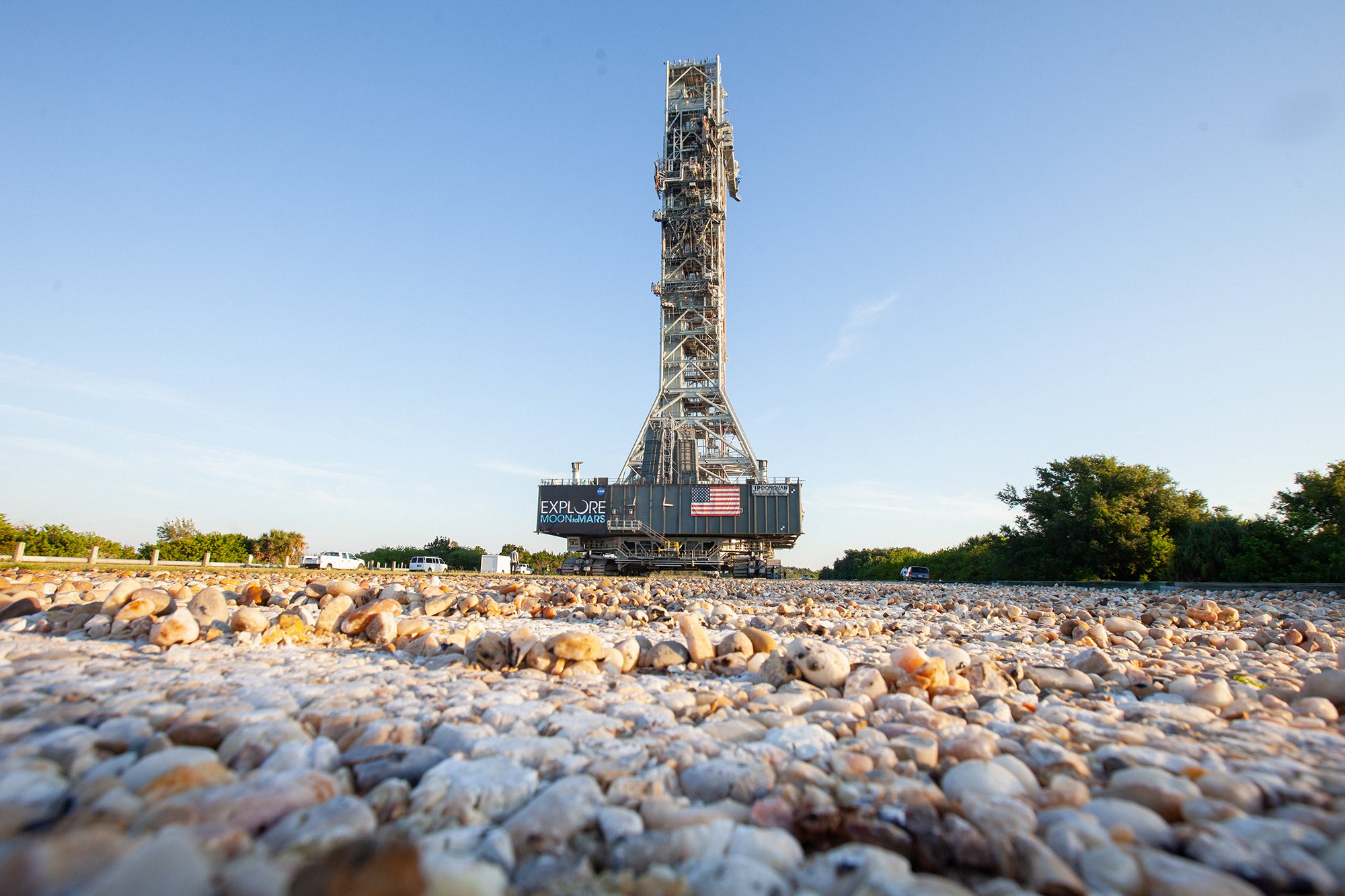
River rocks are mostly quartz, round, and 3-4 inches in diameter, important features for high weight tolerances. They act as ball bearings that allow the crawler to turn with minimal issues. When the weight of the crawler rolls over the rocks, they absorb energy from compaction, helping to reduce the vibration on the surface that could cause damage to any flight hardware being transported. In addition to being easily accessible and affordable, river rock provides the right kind of support the crawler needs.
During the Apollo era, the Saturn V rocket with the Apollo capsule could weigh upward of 12 million pounds. Due to those enormous amounts of pressure during transport, new rock had to be installed every 10 years. The space shuttle missions were no different. To meet the standards required for the crawlerway, these rocks have precise specifications outlined by the American Society for Testing and Materials. The crawlerway rocks must be laid approximately 8-12 inches thick due to the intense crushing the material will endure. Eventually, the rocks will be crushed to the size of small pebbles that must be replaced. If not, they will begin to trap water in the crawlerway which is a major rolling hazard for the fully loaded crawler.
For the Artemis I mission, the crawler-transporter 2, the mobile launcher, and the SLS super heavy-lift rocket with Orion, will weigh in at about 21.5 million pounds. With future missions and an even larger SLS rocket in mind, the crawlerway must be able to support at least 25.5 million pounds for this new era of space transportation. The crawlerway rocks will have to be replaced more frequently than in any other era of space travel.
NASA has a history of buying rocks from Alabama, Tennessee, and Georgia due to their proximity to Florida. The last river rock order placed came from Jemison, Alabama, for a major upgrade completed in 2014. Since then, smaller upgrades have been made as needed. In total, the crawlerway currently contains about 70,000 tons of Alabama river rock. Prior to the launch of Artemis II, the team at Kennedy will perform another major upgrade on the crawlerway.
The crawlerway and Exploration Ground Systems team will soon get to exhibit their skills during rollout of the SLS rocket and Orion for the final test before launch – wet dress rehearsal. The rocket will travel 4.2 miles on the crawlerway from the Vehicle Assembly Building to Launch Pad 39B for the first time, approximately an eight-hour ride with the crawler moving at a top speed of 0.83 miles per hour. For the wet dress rehearsal, propellant will be loaded into the integrated rocket and spacecraft at the launch pad. After the test, the rocket will roll back to the Vehicle Assembly Building where it will undergo final preparations for launch. Then, this spring, the crawlerway will be center stage again, as the integrated SLS rocket and Orion roll out for the Artemis I test flight.
Steve Burch Receives Golden Eagle Award
Bill Hill, top right, director of the Safety and Mission Assurance Directorate at NASA’s Marshall Space Flight Center, presents Steve Burch of Bastion Technologies with the Golden Eagle Award during the Mission Success is in Our Hands virtual lecture series Feb. 17. The award is presented to team members who make significant, identifiable contributions to flight safety and mission success. (NASA)
NASA Announces Launch Options for 2022 Student Launch Competition
NASA’s 2022 Student Launch rocketry challenge will provide both in-person and virtual opportunities for the competition’s culminating event.
The in-person option will include a two-day event, with hardware checks April 22, and launch day April 23, in Huntsville, Alabama. If rain is a factor April 23, a makeup day is scheduled for April 24. Alternatively, Launch Division teams may conduct final test flights at a home launch field, as outlined in the Student Launch Handbook. Teams may also opt to compete in the Design Division. This year’s awards ceremony will be held virtually, after the at-home launch window closes May 9.
Student Launch challenges middle school, high school, college, and university students from around the United States to design, build, test, and fly a payload and high-powered amateur rocket to an altitude between 4,000 and 6,000 feet. Teams also must meet multiple documentation and presentation milestones with NASA experts as they develop their rocket. Teams are scored in nearly a dozen other categories, including safety, vehicle design, social media presence, and science, technology, engineering, and mathematics engagement.
This year’s competition will feature a virtual Launch Month in place of an in-person launch week. All teams will be invited to participate in virtual exhibits/tours, presentations by NASA subject matter experts, rocket fair sessions, and a career fair in the weeks surrounding the in-person launch.
The Student Launch management team carefully evaluated COVID-19 conditions and weighed concerns when deciding to hold an in-person event. Procedures and precautions will be in place at the hardware checks and launch to reduce the risk of virus transmission.
NASA’s Southeast Regional Office of STEM Engagement manages Student Launch, one of the agency’s Artemis Student Challenges. These activities stimulate innovation and advance NASA’s human exploration mission through collaboration with educational institutions and students – the Artemis Generation, who will help NASA explore the Moon and Mars. The agency’s Marshall Space Flight Center hosts Student Launch.
NASA’s 2022 Human Exploration Rover Challenge to Proceed Virtually
By Wayne Smith
NASA’s Human Exploration Rover Challenge will continue as a virtual event in 2022. This year’s challenge will culminate with the submission of rover demonstration videos and a virtual awards ceremony planned April 29. Teams will be informed how to submit required videos.
The safety and protection of the Rover Challenge student teams, the NASA workforce and all those supporting the competition is NASA’s top priority.
“In an effort to bring Rover Challenge to as many as possible, with travel restrictions and other COVID-19 limitations still affecting our participants, we made the decision to continue the challenge virtually,” said Aundra Brooks-Davenport, who leads the challenge. “We are planning a month of engaging virtual events culminating with a virtual awards ceremony. We look forward to welcoming all teams back to Huntsville in 2023.”
Teams having submitted all deliverables by due dates outlined in the handbook (or shared otherwise) will be eligible for the following awards:
- Overall winner
- STEM engagement
- Project review
- Phoenix
- Social media
- Task challenge
- Ingenuity
- Safety
The Human Exploration Rover Challenge, managed by the Southeast Regional Office of STEM Engagement at NASA’s Marshall Space Flight Center, encourages students to build upon Apollo missions while using the goals of the Artemis program to pilot human-powered rovers over a challenging half-mile course simulating the terrain of the Moon, Mars, and other bodies in the solar system. For more than 25 years, the annual challenge and its sponsors have encouraged student teams from the United States and around the world to push the limits of innovation and imagine what it will take to explore other worlds in the universe.
Smith, a Media Fusion employee, supports Marshall’s Office of Strategic Analysis & Communications.
NASA Opens Second Phase of $5 Million Lunar Power Prize Competition
By Taylor Goodwin
Under Artemis, NASA plans to return to the Moon using innovative technologies to explore more of the lunar surface than ever before. This will require lunar surface systems that can deliver continuous, reliable power to support mining and construction, research activities, and human habitation.
The newest phase of NASA’s Watts on the Moon Challenge offers up to $4.5 million in prizes to design, build, and demonstrate a prototype that addresses technology gaps in power transmission and energy storage. Maximizing system efficiency and minimizing system mass will be an important part of what the challenge participants address in their designs, given that transporting all the needed equipment to sustain human presence on the lunar surface will require multiple missions. This challenge seeks advanced technology that is well-positioned to progress toward flight readiness and future operation on the lunar surface after the challenge.
“Challenges like Watts on the Moon give us the chance to utilize the creativity of industry, academia, and the public to power our return to the Moon,” said Jim Reuter, associate administrator for NASA’s Space Technology Mission Directorate at NASA Headquarters. “I look forward to seeing how their solutions may also have important applications here on Earth and help advance similar technologies for terrestrial application and commercialization.”
Phase 1 of Watts on the Moon opened in September 2020 and focused on the ideation of energy management, distribution, and storage solutions. In May 2021, seven winners were awarded a total of $500,000. To compete in Phase 1, teams had to submit ideas to support aspects of a hypothetical mission scenario – harvesting water and oxygen from a dark crater at the Moon’s South Pole with energy generated by a power plant located on the crater’s outer rim.
NASA invites previous participants as well as new teams to compete in Phase 2.
“We encourage the academic and private sectors to submit entries or even join forces to do so,” said Dr. Marla Pérez-Davis, director for NASA’s Glenn Research Center. “Here at NASA Glenn, we design, develop, and test innovative technologies to advance NASA’s missions in aeronautics and space exploration. As we lead this challenge, we look forward to many innovations to power operations on the Moon and beyond.”
Teams can register to compete on the challenge site by 4 p.m. CDT on June 15, 2022. Phase 2 of the challenge will last approximately 30 months and will take place in three segments, called competition levels. In each competition level, eligible teams will submit the required materials and will be evaluated on their submission and scored by the judging panel. Up to seven winners from competition level one will advance to level two and will be awarded part of prize purse up to $1.4 million. Up to four winners from competition level two will advance to level three and will be awarded a part of a prize purse up to $1.6 million. Up to two teams will be recognized as winners in competition level three, where the first-place team will be awarded $1 million, and second place will be awarded $500,000.
The Watts on the Moon Challenge is managed by Centennial Challenges, based at the agency’s Marshall Space Flight Center. Centennial Challenges is a part of the Prizes, Challenges, and Crowdsourcing program within the agency’s Space Technology Mission Directorate. Glenn is the lead center for the challenge and is responsible for defining the challenge goals, success criteria, technology, and infusion paths. Centennial Challenges has contracted HeroX to support the administration of this challenge.
Goodwin, an LSINC employee, supports Marshall’s Office of Strategic Analysis & Communications.
Latest on Artemis I Highlighted on ‘This Week at NASA’
An update on preparations for the Artemis I Moon mission is featured in “This Week @NASA,” a weekly video program broadcast on NASA-TV and posted online.
Teams at the agency’s Kennedy Space Center are assessing schedules and continuing preparations with the Space Launch System (SLS) rocket and Orion spacecraft, ahead of the upcoming uncrewed Artemis I mission around the Moon. NASA is currently targeting no earlier than March 17 for rollout of the combined spacecraft to Launch Pad 39B for final testing – including the wet dress rehearsal test, which is now targeted for early April. Launch of Artemis I is still being targeted for the early May timeframe, but activities with other scheduled launches at Kennedy could require mission managers to reevaluate that timeframe.
NASA’s Marshall Space Flight Center manages the SLS Program.
View this and previous episodes at “This Week @NASA” on NASA’s YouTube page.


























